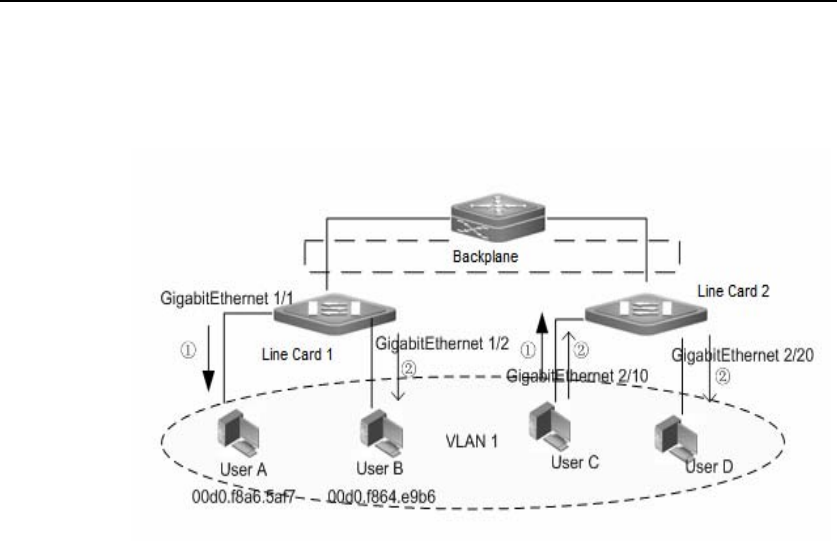
DES-7200 Configuration Guide Chapter 2 MAC Address Configuration
2-8
The disadvantages of the uniform MAC address learning: since the address
tables for all line cards in the switch are asynchronous, the packets are sent in
the unicast form for Line Card 1 while in the broadcast form for Line Card 2.
Figure-10 Uniform MAC address Learning: Unicast and Multicast Packets
Forward
When the UserC under the Line Card 2 sends a packet to the UserA, since the
Line Card 2 has learned the MAC address for the UserA, the packet will be
forwarded to the UserA in the unicast form.
When the UserC under the Line Card 2 sends a packet to the UserB, since the
Line Card 2 has learned the MAC address for the UserB, the packet will be
forwarded in the broadcast form. At this time, the UserD that is in the same
VLAN of UserC also receives the packet. The packet will be forwarded in the
unicast form to the UserB after being sent to the Line Card 1.
B. MAC Address Synchronization
In the uniform MAC address learning mode, the Ethernet switch supports the
MAC address synchronization function. All line cards in the switch no longer
learn the MAC address in the dispersive MAC address learning mode and
synchronize the new MAC address learned by any line card.
The advantages of the MAC address synchronization: the MAC addresses
within the switch are synchronous. It helps prevent the packets in the network
from being forwarded in the broadcast form if the number of users connecting to
the switch exceeds the MAC address table limit.
The disadvantages of the MAC address synchronization:
Occupy the large space of the MAC address table: Even though two users
exchange the packets on the same line card, the MAC address space of
other line cards will also be occupied.


















